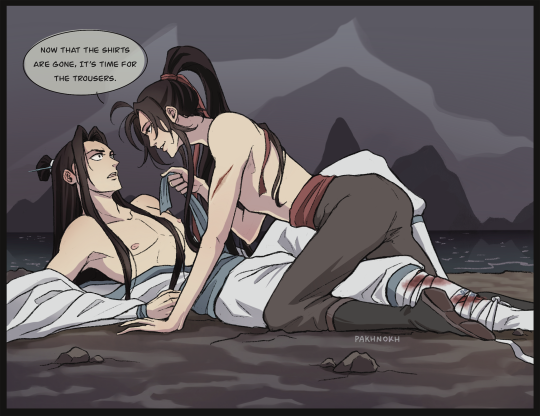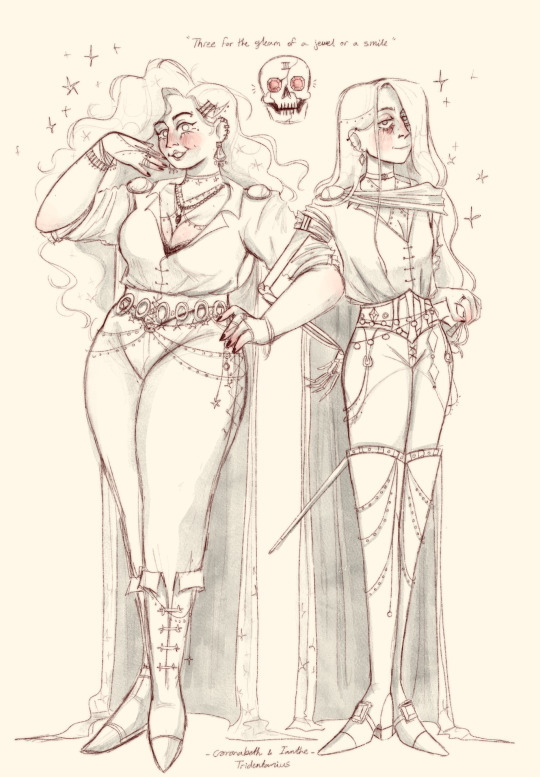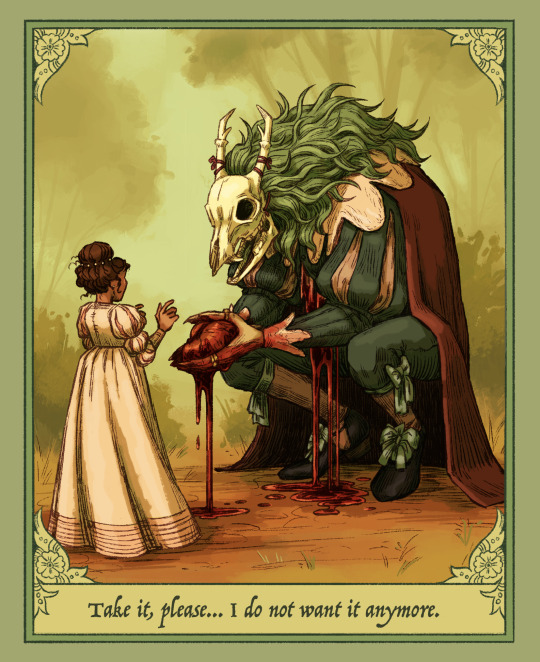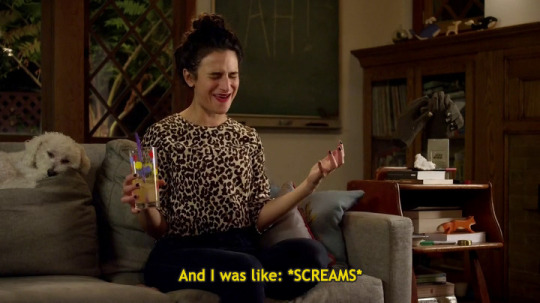Text
On writing sexual tension
⊹ standing too close. like just barely not touching. why are their shoulders breathing on each other??
⊹ conversations that sound normal but feel like foreplay. “pass the salt” has never been so loaded.
⊹ one of them says something flirty and the other freezes for 0.2 seconds like “oh.”
⊹ eyes dropping to lips and then—back up. with effort.
⊹ holding eye contact just a little too long. like... are they gonna kiss or duel??
⊹ unintentional physical contact that lasts one second too long and now they’re both broken
⊹ a hand on the small of the back. that’s it. that’s the tweet.
⊹ tension so thick that other characters start noticing like “hey are you two okay?” (they are not)
⊹ “accidental” sleepovers. “oh no there’s only one bed.” yeah. suuuure.
⊹ biting back a smile. biting back a moan. biting anything really.
⊹ one of them walks away and the other has to physically restrain themselves from watching the hips
⊹ lots of sighing. frustrated sighs. horny sighs. “i want to kiss you but I’m emotionally unavailable” sighs.
29K notes
·
View notes
Text
On Writing Romance
⊹ If their personalities don’t change the way they love, I don’t care. Show me the emotionally constipated gremlin trying to say “I love you” through soup or blood sacrifices.
⊹ Miscommunication tropes are only tolerable if it’s because both characters are awkward disaster goblins who panic and start lying for no reason.
⊹ Romance should amplify character arcs, not replace them. If they abandon their goals the moment someone is cute at them, that’s not love, that’s weak writing.
⊹ Let them fall in love slowly. Through shared snacks, petty arguments, silent glances, sarcastic encouragement, bandaging each other’s wounds. Love is built. Not summoned.
⊹ Consent is hot. Clear boundaries are hot. Flirting where both parties know what they’re doing and still get flustered is the hottest.
⊹I don’t want “he was dark and brooding.” I want “he was emotionally unavailable and bad at feelings but showed up anyway and said 'I’m trying.'”
⊹ If you're writing a friends-to-lovers arc, the moment they realize is not when they see each other in a pretty outfit. It’s when they see them being genuinely kind. Or brave. Or stupidly loyal.
⊹ Physical affection is great, but emotional pattern recognition is better. I want “I noticed you chew your sleeve when you’re scared” kind of intimacy.
⊹ Let one character love the other first and let them suffer. Let them burn quietly in the corner while the other obliviously sharpens their sword.
⊹ If they don’t have a little bit of “I hate how much I love you,” what are we even doing here?
⊹ Sometimes the romance arc is learning to love yourself first. Or breaking a pattern. Or finally understanding you’re worthy of love at all.
⊹ The best romance scenes are never just about the romance. They’re about trust, choice, timing, and all the things they’re afraid to say.
3K notes
·
View notes
Text
How to Emotionally Destroy Readers
✩ Gut-punches are about timing. You don't say “I love you” during the sunset. You say it in the middle of a burning building or right after they stab you.
✩ A single line of dialogue like “you were supposed to come back” hits harder than an entire page of poetic mourning.
✩ Don’t just break their hearts, break their sense of identity. Make them question who they are, what they stand for, and if it was ever worth it (That’s premium pain.)
✩ Let someone be forgiven… but not trusted again. That's the kind of heartbreak that lingers like smoke.
✩ Sometimes the most devastating line is the one they don’t say. Silence is a character too.
✩ Give them a moment of joy. Right before everything falls apart. Hope makes the fall hurt more.
✩ Someone saying “I forgive you” through tears? Powerful. Someone saying “I still love you but I can’t stay”? Absolutely soul-shattering.
✩ If they die, don’t describe the death. Describe the aftermath. The coat left hanging by the door. The mug still on the table. The dog waiting.
7K notes
·
View notes
Text
Zoom In, Don’t Glaze Over: How to Describe Appearance Without Losing the Plot
You’ve met her before. The girl with “flowing ebony hair,” “emerald eyes,” and “lips like rose petals.” Or him, with “chiseled jawlines,” “stormy gray eyes,” and “shoulders like a Greek statue.”
We don’t know them.
We’ve just met their tropes.
Describing physical appearance is one of the trickiest — and most overdone — parts of character writing. It’s tempting to reach for shorthand: hair color, eye color, maybe a quick body scan. But if we want a reader to see someone — to feel the charge in the air when they enter a room — we need to stop writing mannequins and start writing people.
So let’s get granular. Here’s how to write physical appearance in a way that’s textured, meaningful, and deeply character-driven.
1. Hair: It’s About Story, Texture, and Care
Hair says a lot — not just about genetics, but about choices. Does your character tame it? Let it run wild? Is it dyed, greying, braided, buzzed, or piled on top of her head in a hurry?
Good hair description considers:
Texture (fine, coiled, wiry, limp, soft)
Context (windblown, sweat-damp, scorched by bleach)
Emotion (does she twist it when nervous? Is he ashamed of losing it?)
Flat: “Her long brown hair framed her face.”
Better: “Her ponytail was too tight, the kind that whispered of control issues and caffeine-fueled 4 a.m. library shifts.”
You don’t need to romanticise it. You need to make it feel real.
2. Eyes: Less Color, More Connection
We get it: her eyes are violet. Cool. But that doesn’t tell us much.
Instead of focusing solely on eye color, think about:
What the eyes do (do they dart, linger, harden?)
What others feel under them (seen, judged, safe?)
The surrounding features (dark circles, crow’s feet, smudged mascara)
Flat: “His piercing blue eyes locked on hers.”
Better: “His gaze was the kind that looked through you — like it had already weighed your worth and moved on.”
You’re not describing a passport photo. You’re describing what it feels like to be seen by them.
3. Facial Features: Use Contrast and Texture
Faces are not symmetrical ovals with random features. They’re full of tension, softness, age, emotion, and life.
Things to look for:
Asymmetry and character (a crooked nose, a scar)
Expression patterns (smiling without the eyes, habitual frowns)
Evidence of lifestyle (laugh lines, sun spots, stress acne)
Flat: “She had a delicate face.”
Better: “There was something unfinished about her face — as if her cheekbones hadn’t quite agreed on where to settle, and her mouth always seemed on the verge of disagreement.”
Let the face be a map of experience.
4. Bodies: Movement > Measurement
Forget dress sizes and six packs. Think about how bodies occupy space. How do they move? What are they hiding or showing? How do they wear their clothes — or how do the clothes wear them?
Ask:
What do others notice first? (a presence, a posture, a sound?)
How does their body express emotion? (do they go rigid, fold inwards, puff up?)
Flat: “He was tall and muscular.”
Better: “He had the kind of height that made ceilings nervous — but he moved like he was trying not to take up too much space.”
Describing someone’s body isn’t about cataloguing. It’s about showing how they exist in the world.
5. Let Emotion Tint the Lens
Who’s doing the describing? A lover? An enemy? A tired narrator? The emotional lens will shape what’s noticed and how it’s described.
In love: The chipped tooth becomes charming.
In rivalry: The smirk becomes smug.
In mourning: The face becomes blurred with memory.
Same person. Different lens. Different description.
6. Specificity is Your Superpower
Generic description = generic character. One well-chosen detail creates intimacy. Let us feel the scratch of their scarf, the clink of her earrings, the smudge of ink on their fingertips.
Examples:
“He had a habit of adjusting his collar when he lied — always clockwise, always twice.”
“Her nail polish was always chipped, but never accidentally.”
Make the reader feel like they’re the only one close enough to notice.
Describing appearance isn’t just about what your character looks like. It’s about what their appearance says — about how they move through the world, how others see them, and how they see themselves.
Zoom in on the details that matter. Skip the clichés. Let each description carry weight, story, and emotion. Because you’re not building paper dolls. You’re building people.
12K notes
·
View notes
Text
1 note
·
View note
Text
























Ophelia (2018) // November Nights, Arden Mae // House of the Dragon (2022-) // Persephone Returns, Emily Rose Cole // Ophelia, Friedrich Wilhelm Theodor Heyser // Mystery of Love, Sufjan Stevens // Fire with Fire (1986) // Spring and All, Cathy Park Hong // On-drakón (2015) // The Complex Sentence, Tony Hoagland // The Musketeers (2014-2016) // [from a letter], Sylvia Plath // 1883 (2021-22) // The Leaving Season, Jihyun Yun // Dorian Gray (2009) // The Lady of Shalott, Alfred Tennyson // Anne of Green Gables (1985) // Advantages of Being Evergreen, Oliver Baez Bendorf // Ophelia, John Everett Millais // Hamlet, William Shakespeare // Melancholia (2011) // Wild Geese, Mary Oliver // Revenge of the Sith (2005) // Summer Morning, Mary Oliver
4K notes
·
View notes
Text

Tulu Xuanwu is about to call the police, you shameless gays in denial!! ><"
2K notes
·
View notes
Text
Nothing is original. Steal from anywhere that resonates with inspiration or fuels your imagination. Devour old films, new films, music, books, paintings, photographs, poems, dreams, random conversations, architecture, bridges, street signs, trees, clouds, bodies of water, light, and shadows. Select only things to steal from that speak directly to your soul. If you do this, your work (and theft) will be authentic. Authenticity is invaluable; originality is non-existent. And don’t bother concealing your thievery — celebrate it if you feel like it. In any case, always remember what Jean-Luc Godard said: ‘It’s not where you take things from — it’s where you take them to.’
Jim Jarmusch, Five Golden Rules of Cinema
8K notes
·
View notes
Photo

Eve, 1927 by Dorothy Webster Hawksley (English, 1884–1970)
10K notes
·
View notes
Text

the most normal girls in the world …<3
4K notes
·
View notes
Text
rating all the things lymond calls will scott by how gay and sassy they sound
let me take you on a journey of one relationship development reflected in manifold creative nicknames :D
(this got very long and the one to blame is lymond. it’s definitely him who can’t shut up, not me. bc succinctness is my middle name🙈)

Keep reading
72 notes
·
View notes
Text
Repeat after me:
Good rest is required for creativity
I am allowed to rest in order to restore and rejuvenate my creative well
I am not lazy for resting
My WIP will benefit from the rest I give myself and my creativity
My writing requires rest just as much as I do in order to flourish
3K notes
·
View notes
Text

ever use monsters to work out your complicated feelings toward romance? yeah, me neither...
happy valentine's 🫀🌿
6K notes
·
View notes
Text
I wouldn’t even pay to see my own content
36K notes
·
View notes
Photo



me, reading all of this, absolutely losing my shit about it:

and then it just has to go and

that’s it! I’m on the floor! I’m down on the floor dissolving into a puddle of tears about the main antagonist of this 2000 page novel and about cycles and breaking cycles and Xie Lian’s kindness and Xie Lian passing on the kindness that was given to him in his lowest moment to his greatest tormentor and–
102 notes
·
View notes

